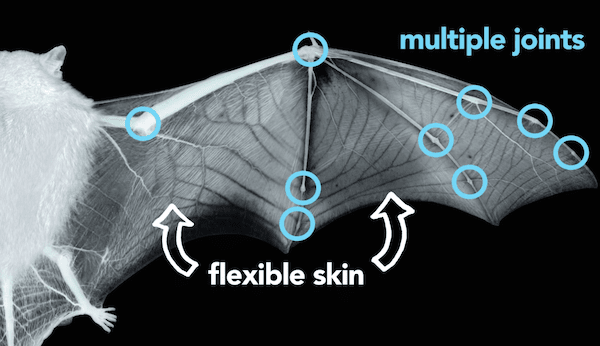Bat's Wing's Sensors Inspire Columbia Researchers To Build Better Aircrafts
Bats are the mammals with webbed wings as their forelimbs, making them naturally capable of sustained flight with sharp turns, steep nosedives and ability to fly high in the night sky. A team of researchers from Columbia University found inspiration in the bats and presented a study that shows evidence that the sense of touch plays a vital role in powered flight. Till date, humans have not been able to build aircrafts that match a bat's agility. However, with the new research there are chances that a completely new aircraft design is possible with new sensors for monitoring the airflow. This is because, it was found that an array of sensory receptors under the wing provide feedback to the bat during the flight. For optimising flight control, the bat's brain responds to the touch signals incoming through these sensors and rapidly adjusts its wing position. With these new findings, the Columbia researchers hope to mimic the bat's impressive midair manoeuvring in our aircrafts of the future.
Bats are found to process information that it receives from the various sensors so as to avoid any obstacles mid-flight. By studying the distribution of various touch-sensitive receptors in the wing as well as the bat's flexible skin's connectivity to the nervous system, the research team deduced how bat's do their movements with respect to the change in wind direction and detect turbulent airflow during flight.

The peculiar sensory circuitry in bat's wings is largely responsible for its sharp flight. These wings are a result of the fusion of the trunk, hindlimb and forelimb during its embryonic development. The researchers found this detail particularly important because it showed how evolutionary processors embed new body parts in the nervous system. Their research also indicated that a bat's brain's neurons respond to the wing's stimulation by air currents or with any slight touch. This means that its airflow and tactile stimulation activates common neural pathways.
The Columbia University's team is now working on tracing the sensory circuits from the wings all the way back to skin and ultimately the brain. They want to find out how individual components of these circuits are connected in the central nervous system, so that they gather data on how the bat integrates all this sensory information to create smooth, nimble flight.
Check out a video demonstration of their project -
What are your thoughts about the biomimic of a bat's flight in the technology for building aircrafts of the future? Share with us in comments below.
Bats are found to process information that it receives from the various sensors so as to avoid any obstacles mid-flight. By studying the distribution of various touch-sensitive receptors in the wing as well as the bat's flexible skin's connectivity to the nervous system, the research team deduced how bat's do their movements with respect to the change in wind direction and detect turbulent airflow during flight.

The peculiar sensory circuitry in bat's wings is largely responsible for its sharp flight. These wings are a result of the fusion of the trunk, hindlimb and forelimb during its embryonic development. The researchers found this detail particularly important because it showed how evolutionary processors embed new body parts in the nervous system. Their research also indicated that a bat's brain's neurons respond to the wing's stimulation by air currents or with any slight touch. This means that its airflow and tactile stimulation activates common neural pathways.
The Columbia University's team is now working on tracing the sensory circuits from the wings all the way back to skin and ultimately the brain. They want to find out how individual components of these circuits are connected in the central nervous system, so that they gather data on how the bat integrates all this sensory information to create smooth, nimble flight.
Check out a video demonstration of their project -
Source: #-Link-Snipped-#
0

